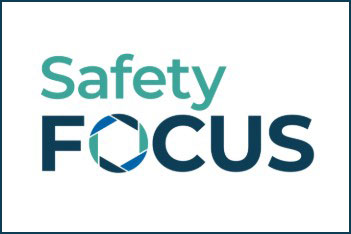
Over the past decade, the rates of serious injuries and fatalities (SIFs) have declined at a much slower rate than less-serious workplace injuries. This problem should raise serious questions and implications for safety leaders at all organizational levels, from the first level of supervision to the senior-most executive and board member, and to the labor leader and government regulator.
Read it here
Seven multinational corporations sought to develop a better understanding of the causes and correlates of SIFs. These organizations submitted 2 years of incident data related to SIFs, less-serious recordable injuries and near-hits. In total, these data included 1,028 event cases representing approximately 1 million global workers and contractors. This research will ultimately lead to a better understanding of SIF causes and the establishment of new paradigms for SIF prevention.
The Pattern Is Evident
Leaders who closely follow lagging and leading safety performance indicators have seen the national and global data (Figure 1, p. 36) and they know it elicits questions about the effectiveness of current safety management systems (BLS). Nonfatal recordable incidents in the U.S. have declined steadily over the past 2 decades. The rate of nonfatal recordable injuries declined 51% in the past 15 years and 34% just in the past 10. While the fatality rate has also declined, it has been much less dramatic: only 12.5% in the past 10 years and 25.5% in the past 15 (BLS). Data pulled from a sampling of countries with data available through the International Labor organization (2009) suggest similar experience in many countries (Figure 2, p. 36).
Even at a more granular level, this same pattern is evident. Data from International Association of Oil and Gas Producers (2012) shows similar, unparallel levels of rate reduction among the contractor population across all business functions (Figure 3, p. 37). Many organizations have observed this phenomenon among their own population. For example, Figure 4 (p. 37) presents data from one global organization (identity protected).
This article aims to provide insight into factors behind these trends, approaches for data analysis and new conclusions regarding SIF prevention. In the study described, SIF cases were defined as life threatening, life-altering, or fatal injuries and illnesses (Table 1, p. 38 provides a complete definition).
Injuries of ergonomic origins and catastrophic multiple-fatality incidents of PSM/fire/explosion origins were purposefully excluded in the design of this research. The research team was specifically interested in the attributes of single-fatality events and felt that inclusion of ergonomic/musculoskeletal and multiple-fatality/PSM events might bias the findings. The researchers recommend that future studies include multiple-fatality events as they may shed additional insight on the fatality causation question and reveal the existence or nonexistence of biases.
Study Method
Seven multinational organizations expressed interest and concern over the observed pattern of decreasing minor injuries and increasing SIFs. These organizations represented the following industry sectors: food service contractors, basic organic chemical manufacturing, industrial gas manufacturing, crude petroleum and natural gas extraction, marine cargo shipping, grain farming and ore mining. The estimated workforce of each participating company ranged from 5,000 to more than 230,000, with a mean and median of approximately 100,000 workers.
To better understand this issue, the following data provided by six of the firms were analyzed: monthly frequencies of first-aid injuries, medical treatment cases, restricted-duty cases, lost-workday cases, serious injuries and fatalities for 2008 and 2009. Data included both employees and contractors and were broken down by division and region.
Additionally, the researchers asked each organization to provide comprehensive narratives for all serious injuries and fatalities over the 2-year research period, and a sample of non-SIF recordable injuries and near-hit incidents over the same timeframe (Table 2, p. 38) for both the qualitative and quantitative assessment of SIF precursors. Researchers elected to request an equal number of narratives from each organization to balance the representation of industries (and, thus, the type of work and exposure to risk) within the sample.
While all participants had comprehensive incident investigation systems and reporting structures, the maturity and information contained in the individual databases varied greatly. The least sophisticated systems contained little more than unique incident identification numbers, indications of actual consequence and incident narratives.
Due to this variation and the extensive resources some organizations felt would be involved in obtaining the requested information, each participating company agreed to provide 30 SIF narratives, 30 narratives of other recordable injuries (not actually resulting in an SIF) and 30 nearhit narratives. The samples were obtained using random number/seed generators.
As the study progressed, the researchers requested additional random samples of narratives of recordable cases to further study the early finding that non-SIF cases had different causes than SIF cases. A total of 571 narratives were obtained and assessed. Sampling was proportionate to the total incidents in each organization (Table 3, p. 38). Using the SIF exposure assessment methodology, the team determined that a small percentage of the cases originally thought to be non-SIF in fact had SIF exposure potential. The SIF exposure potential rate was determined for each organization and the overall mean was calculated giving each organization equal weight to reflect equal representation of each industry sector.
Study Results
The Heinrich Triangle Is Accurate DescriptivelyHeinrich (1931) asserted that less-severe injuries occur more frequently than more serious injuries. Analysis of data from the companies in this study confirmed that an inverse relationship exists between injury frequency and severity. Although this finding confirms the widely known claim, this research indicates that the ratio of less to more severe injuries varies among companies, and that no constant ratio exists. This finding validates specific criticisms about Heinrich’s 300:29:1 ratio (Figure 5, p. 39) (Anderson & Denkl, 2010; Manuele, 2002, 2011).
A Subset of Reported Incidents Will Have SIF Exposure PotentialDuring the case-by-case analysis, a pattern emerged whereby a percentage of cases originally reported as nonserious contained the potential for something significantly worse to happen. An injury case was determined to have SIF exposure potential when the incident resulted in an actual SIF or when the exposure could have reasonably and realistically resulted in a fatality or serious injury outcome if repeated.
Examination of the entire context of these cases revealed numerous outcomes that could have easily changed to a SIF. Subsequently, additional decision logic was established to enable a consistent, valid and reliable methodology to determine SIF exposure. Using this logic, inter-rater reliability for determining SIF potential was determined to be greater than 90%. When all of the cases from all of the organizations were totaled, it was determined that 21% of all reported cases had SIF exposures (Figure 6).
Heinrich Triangle Is Not Accurate PredictivelyEvaluation of case descriptions and narratives clearly indicated that not all incidents had the potential to be an SIF. This logically leads to a conclusion that reducing the frequency of less-severe incidents at the bottom of the triangle does not necessarily reduce the number at the top in a proportional way. This confirms the data seen at the national, sector and organizational levels, indicating the discrepancy between the rates of reduction (BLS).
The potential for an SIF is variable across the range of less serious injuries that occur, reflecting the fact that SIF potential varies among different types of exposure. For example, a back strain from lifting a load has little SIF exposure potential, while a fall from an elevated work position has high SIF exposure. As a result, an initiative can be highly effective in reducing the number of injuries with low SIF exposure while having little or no effect on the exposures with high SIF exposure potential.
Data analyzed showed the percentage of nonserious injuries that had SIF exposure potential varied among companies, ranging from 10% to 36% (Figure 7, p. 40). This indicates that the percentage of all injuries with SIF exposure potential is organization- and location-specific, and in all cases is a subset of all reported lower severity injuries.
The Contributing Factors for SIFs Are Different Than Those That Underlie Non-SIFsThe study design called for a comparison between qualitative analysis of case narratives and quantitative analysis using a statistical tool. This comparative assessment demonstrated that the qualitative approach yielded results comparable to a more rigorous quantitative approach. The causes and roots of SIFs and non-SIFs are measurably different as determined by both types of analyses. The study examined and contrasted the correlates and causal roots of two categories of injury and incident events (including near-hits) in which the organizations were able to provide adequate detail and narratives.
Qualitative Results
A qualitative analysis approach would be more practical for organizations that do not have ready access to statistical tools and expertise. In such cases, an organization has the resources to analyze no more than about 100 cases at one time. Considering these typical limitations, researchers chose a similar sample size for the qualitative assessment.
In this analysis, the research team evaluated root causes on a random sample of the original 457 narratives collected to draw comparisons between two groups created based on SIF exposure potential:
- Group 1: SIFs and non-SIF injuries and near-hits with potential to become SIFs (n = 55)
- Group 2: Non-SIF injuries and near-hits with no reasonable potential to become SIFs (n = 35)
The data show the causal roots of Group 1 incidents are markedly different than those of Group 2.
Group 1 incidents are strongly related to deficiencies in management systems related to lifesaving policies and programs (see sidebar below, right) and pretask risk assessments, Group 2 incidents are more likely to be related to other human factors.
This analysis identified seven themes related to injury causes. Three of the themes accounted for 82% of SIFs and 91% of non-SIFs:
- 42% of SIFs were related to breakdowns in the processes surrounding lifesaving policies and programs, while 0% of non-SIFs had this relationship.
- 29% of SIFs and 17% of non-SIFs were related to the performance of routine tasks during which exposure changed from a planned state, was unrecognized and could have been prevented by effective pretask risk assessment processes.
- 11% of SIFs and 74% of non-SIFs were related to human factors not connected to the implementation of a life-saving rule process (Table 4, p. 40).
It is important to note that the researchers designed the thematic categories to be mutually exclusive to ensure that any case could only be assigned to one category, thereby preventing double-counting.
Quantitative Results
To conduct a quantitative analysis, the research team evaluated supervised machine learning techniques for classification. These techniques evaluate the properties and patterns of explanatory (independent) variables in terms of the targeted outcome (dependent) variable. Decision trees were selected in part because the output diagrams are simple to understand, leading to enhanced practical application (Hastie, Tibshirani & Friedman, 2009).
After the evaluation of several types of decision trees based on the data analysis and model validation, a chi-squared automatic interaction detector (CHAID) was used. These not only predict the outcome variable (SIF/non-SIF) but they also detect interactions between the explanatory variables. The model was validated based on the partitioning of the dataset into training and testing sets.
Analysis was conducted on all of the original 457 case narratives obtained. This dataset used the SIF determination as the target variable and included:
- Group 1: SIFs and non-SIF injuries and near-hits with potential to become SIFs—319 cases examined.
- Group 2: Non-SIF injuries and near-hits with no reasonable potential to become SIF—138 cases examined.
The model developed (Figure 8) correctly classified incidents with an overall accuracy of 78% and categorized SIF incidents with 82% accuracy. This analysis showed that Group 1 injuries had a greater association with two variables than Group 2 injuries.
- Type of work activities and work situations. This included operation of mobile equipment, watercraft, working under suspended loads and working at elevations. Of 126 injuries sustained in association with these activities, 114 (90.5%) were Group 1, and only 12 injuries were Group 2. Among these activities, 36 were coupled with factors such as poor or risky standard operating procedures or a deviation or drift from normal procedures over time.
- Type of exposure sources and safety controls. This group included equipment and pipe opening of hazardous chemicals, lockout/tagout, machine guarding and barricades, confined space entry and use of hot work permits. Of 47 injuries sustained in association with the type of safety control, all 47 injuries were Group 1.
This finding confirms that data on high-potential non-SIF outcome cases can be useful in defining exposure to SIF. These exposures, or SIF precursors, will form the basis for intervention efforts.
The qualitative and quantitative analyses were conducted independently by different members of the research team to reduce potential for bias. When the results of each analysis were compared to each other, it was observed that each analysis approach yielded essentially the same conclusions: The factors contributing to SIF cases and non-SIF cases are notably different; SIF precursors are discoverable in low-severity cases with SIF exposure potential; and the integrity and reliability in life-saving rule programs are important areas to focus on for SIF prevention.
SIF Exposure Cases Have Discoverable PrecursorsA systematic review of the submitted cases revealed that the occurrence of a major event requires a special and infrequent configuration of factors—a highrisk situation must be present, the safety controls designed to protect against injury must fail and this combination must be allowed to continue. This series of factors all must occur, and this is what the research team referred to as an SIF precursor.
An SIF precursor is a high-risk situation in which management controls are either absent, ineffective, or not complied with, and which will result in a serious or fatal injury if allowed to continue.
The team’s other accepted, and more succinct, definition of a SIF precursor is: An unmitigated high risk situation which will result in a serious or fatal injury if allowed to continue.
In our group discussions, research and experience, it is clear that SIF precursors have a central unifying theme—they are conditions, behaviors, practices, exposures, situations and factors that lead to or contribute to the causation of a serious injury or fatality.
For example, suppose a worker is replacing a valve while working on a scaffold 30 ft above grade level. The worker is improperly tied off to an electrical cable tray suspended from the ceiling, and the scaffold itself has a poorly secured top railing. The worker trips while removing the heavy valve assembly, crashes through the railing, and falls to the ground when the cable tray that he was attached to collapses.
The investigation also reveals that the scaffold had not been inspected and that the supervisor authorized the use of the improvised anchor point, thinking that the site policy allowed him the authority to do so. When other work crews and supervisors were interviewed, they revealed that workers routinely used improvised anchor points that were not formally evaluated and approved by engineering; that scaffolds were erected by a contracted crew; and that the inspection and turnover procedure was irregularly followed. Workers were trained in the proper use of fall arrest devices, but the training did not require demonstration of use. In this case, the management control program, “working at elevations,” existed but it was ineffective, and the process deficiencies were allowed to continue long enough that a fatality eventually occurred.
The SIF precursors for this event were discoverable through observation, inspections, interviews, near-hit reports and other injury reports. One technique that is particularly useful in identifying SIF precursors is longitudinal analysis (correlational research involving repeated observations of reported events over long periods of time) of available data; this can reveal that SIF precursors have existed in an organization/site for a long time. When this blind spot is removed, it becomes equally obvious that the occurrence of an SIF event should not be viewed as a one-off or fluke event.
Discussion
Summary of Research ResultsTo recap, the research team reached the following conclusions:
- The Heinrich triangle is accurate descriptively.
- That triangle is not accurate predictively.
- A subset of reported safety incidents will have SIF exposure potential.
- The causal factors for SIFs are different in kind than those that underlie non-SIFs.
- It is unlikely that a serious injury event is a one-off, considering that the precursors leading to it have been present all along.
As noted, there was large variability in the data available. Some organizations simply did not have enough incidents to provide the requested 30 narratives. For example, Company E only had five SIF cases and Company B did not have a near-hit reporting system and, thus, could not provide 30 narratives in this category. However, the researchers feel this would have only a negligible effect on the findings.
The most significant limitation was the differences in the length and detail of the narratives provided, which could range from several sentences to several pages. While this may have potentially led to some bias or misinterpretation in the analysis and results, the researchers are confident that their assessments were valid based on their knowledge of the workplace conditions and tasks associated with the incidents.
The New Paradigm for Prevention of SIFsAs a result of this research, a new paradigm is proposed for understanding and preventing SIFs (Figure 9). Several new concepts are introduced for consideration by OSH professionals, organizational and labor leaders, and safety regulators.
- Do not expect SIF prevention by working outside of the SIF triangle. On average, 21% of reported cases will have SIF exposure. Because the causes of SIF cases are different than non-SIF cases, working in the 79% non-SIF section of the injury triangle is unlikely to prevent SIF cases.
- The recordable injury log is misleading when it comes to SIF exposure. Organizations should review all reported OSH incidents and identify those with SIF exposure potential. All recordable injuries are not equal. A broken foot caused by stepping on a rock in the parking lot has significantly less SIF exposure than a broken foot that is the result of being driven over by a forklift. On the OSHA 300 log, these two cases appear identical due to outcome, but the exposure situation tells a different story. Most organizations do not have consistent visibility of these data because they is buried in the category of recordable injuries and because those with high SIF are not distinguished from those with low SIF (Manuele, 2008). The research team encourages the addition of a new column to the OSHA 300 log, “SIF Y/N,” as a way to gain a truer measure of what really matters.
- The SIF blind spot is significant. While many organizations are aware of non-SIFs that have high address precursors in sustainable ways (Busse, Curtin, Longhi, et al., 2008; Nash, 2008). Since OSHA total recordable incident rate changes are not indicative of changes to SIF potential, without measuring incidents with SIF potential organizations have no way to assess whether they are making progress in reducing exposures that contribute to SIFs (Manuele, 2008).
- An organization’s view on SIFs must evolve. This involves several steps.
- Educate senior leaders. Corporate executives must understand this problem before they can act on it. The solutions to the SIF problem require their attention, so enlisting their sponsorship is critical (Krause, 2005).
- Provide visibility to SIF exposure. Develop a new working definition of serious injury within the organization. Determine the SIF exposure potential for each reported event and calculate an SIF exposure rate.
- SIF precursors are discoverable and a key to intervention design. They are embedded in high-risk/high-exposure tasks (and the research data showed that 81% of these exposures occurred in the conduct of routine tasks). Management control systems may be missing, deficient or not complied with, and these deficiencies have been allowed to continue. Establish an ongoing process for identifying and remediating precursors. This requires examining all data, including incidents, near-hits, safety observations, audit findings and interviews with employees. OSH professionals should include process safety exposures as well as personal safety exposures.
- Integrate interventions into existing safety management systems. Many organizational systems, such as life-saving safety rules, pretask risk assessments, stop-work authority, incident handling systems, audits and safety observations, already exist, and the solutions to SIF precursors can be built into these systems.
- Incident reporting and investigations are not as effective as they should be. The case narratives are critical to understanding the context of an SIF exposure situation. Longitudinal analysis will reveal significant opportunities for improvement such as identification of multiple contributing factors and precursors; effectiveness of corrective and preventive actions; and effectiveness of communicating and implementing lessons learned. Highly effective incident reporting and investigation systems can be instrumental in the transformation to a high-performance organization.
- The role for behavior-based safety is significant and underused. The study team further examined a sample size of 55 SIF/SIF-potential cases and confirmed that the SIF precursors, preconditions and exposures that contributed to the occurrence of these incidents would be discoverable through interviews and/or observations in 87% of the cases. More work is needed to develop observers’ abilities to discover SIF precursors.
- SIF exposure events are not one-off events. Because the precursors to these events have been in place long before the event occurred, management’s vocabulary (“out of the blue,” “freak accident”) and reaction (confusion) to SIF occurrences must change. It is known that certain kinds of situations trigger, precede or cause SIFs, that SIFs do not occur randomly and that they are virtually never isolated events (Manuele, 2008).
Conclusion
This study aimed to gain a better understanding of the causes of SIFs to enable the development of improved approaches for the reduction of SIFs. The findings suggest potential flaws in the way organizations traditionally think about SIFs. Many organizations are aware of OSH events that have high potential, but few have the consistent visibility needed to address precursors in sustainable ways (Phimister, Bier & Kunreuther, 2005).
Companies that track SIFs find that it represents a clear line of differentiation from other types of injuries (Nash, 2008). Losing one’s life, sight or mobility, or other injuries of similar magnitude are different from injuries that heal without life-changing consequences. All managers want to reduce and eliminate every type of injury, but consideration should be given to the allocation of safety resources specifically targeted to the reduction of potential for serious and fatal events.
Unless this issue is addressed, the pattern described earlier—of flat or no improvement in the occurrence SIFs—will likely continue. Lack of visibility makes it unlikely that the factors underlying SIFs will be addressed effectively. The kinds of activities most organizations are doing presently will not provide the visibility needed to address the issues underlying SIFs. Doing more of the same will not reduce SIFs.
The new paradigm recognizes that a different strategy is required to prevent SIFs. Intervention is needed to change the course and direction of how resources are used in order to affect SIF exposures. The core objective of such an intervention is to identify and remediate precursors, not as a onetime activity but as an ongoing process. How each organization approaches the specifics will depend on many factors, including level of safety maturity, strength of existing safety systems, organizational ability to undertake change, and strength of safety leadership and culture. PS
28. Cognitive Bias in Safety: Controlling the Consequences
29. Uncovering the Real Causes of Fatalities and Severe Loss





